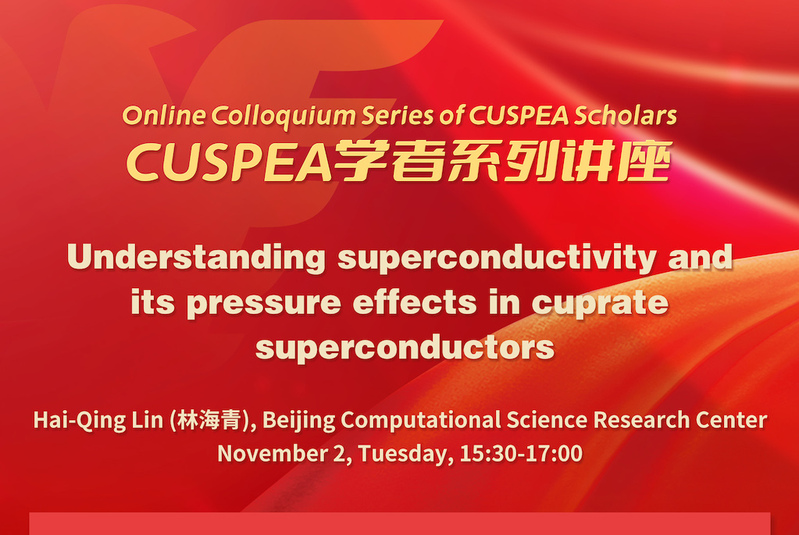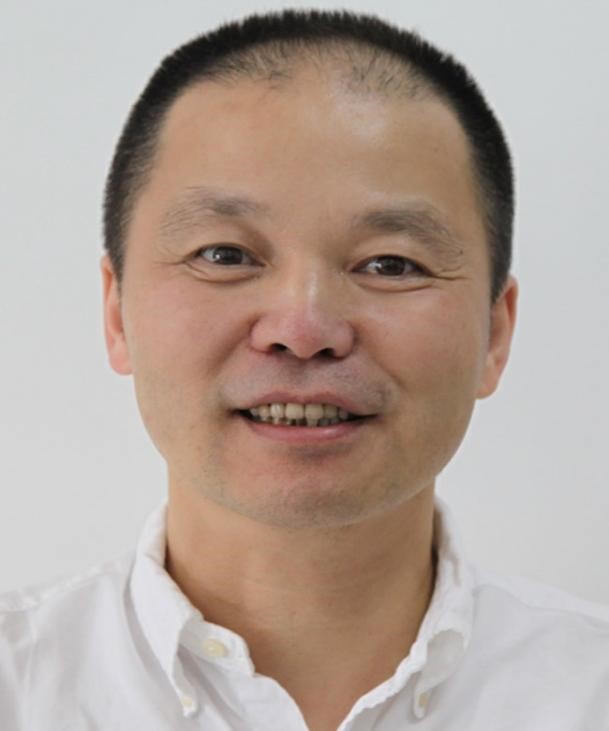Hai-Qing Lin (林海青), Beijing Computational Science Research Center
November 2, Tuesday, 15:30-17:00
Zoom会议号: 930 130 2021 密码: 202111

Abstract
In this talk, I report our efforts on understanding the mechanism of high-temperature superconductivity in cuprates. By considering the widely accepted dispersion of electronic structure, we developed an extended interlayer coupling model for layered d-wave cuprate superconductors [1]. We showed the change of the maximum critical temperature Tc from homologous series to series is determined by the next-nearest-neighboring hopping, while the difference of the maximum Tc among the compounds in the same homologous series is controlled by the interlayer pairing strength. These trends turn out to be valid when the model is extended to the phonon-mediated superconductivity [2]. We further found that the dependence of both Tc and the oxygen isotope exponent on the doping level, number of CuO2 layers, and cation disorder in the mercury-, bismuth-, and thallium-based family can be well reproduced within one single theoretical framework. Assuming the effective attractive interaction, the hole concentration, and phonon cutoff frequency as intrinsic pressure variables, we also found that the theoretical model accounts well for the pressure dependence of Tc in Y-Ba-Cu-O system [3] as well as in other homologous families [2]. Our recent experimental results on the Tc evolution with pressure in optimally doped Tl- and Bi-based compounds [4,5] provide the strong support for the importance of the electron-phonon coupling for superconductivity in high-Tc cuprates.
[1] X. J. Chen and H. Q. Lin, Phys. Rev. B 69, 104518 (2004).
[2] X. J. Chen, V. V. Struzhkin, Z. G. Wu, R. J. Hemley, H. K. Mao, and H. Q. Lin, Phys. Rev. B 75, 134504 (2007).
[3] X. J. Chen, H. Q. Lin, and C. D. Gong, Phys. Rev. Lett. 85, 2180 (2000).
[4] J. B. Zhang, V. V. Struzhkin, W. G. Yang, H. K. Mao, H. Q. Lin, Y. C. Ma, N. L. Wang, and X.J. Chen, J. Phys.: Condensed Matter 27, 445701 (2015).
[5] X. J. Chen, J. W. Hu, J. B. Zhang, J. Xin, M. Bykov, E. Bykova, V. V. Struzhkin, W. G. Yang, A. F. Goncharov, C. T. Lin, G. D. Gu, R. E. Cohen, A. V. Balatsky, and H. Q. Lin (unpublished).
About the speaker

Prof. Hai-Qing Lin had his BS from the University of Science and Technology of China in 1981. He went to US via the first CUSPEA program and obtained his PhD from the University of California at San Diego in 1987. He was a research associate in Brookhaven National Laboratory from 1987-1989, a research associate in CNLS, Los Alamos National Laboratory from 1989-1991, and a research Assistant Professor in University of Illinois at Urbana-Champaign from 1991-1995. He worked at the Chinese University of Hong Kong as Associate Professor (1995-2001), and as Professor (2001-2012). In 2009, he came to Beijing and established Beijing Computational Sciences Research Center (CSRC), and was the Director of CSRC till June 2021. In 2019, he was elected to the Chinese Academy of Sciences.
He is broadly interested in condensed matter physics and computational physics, which includes magnetism and superconductivity, entanglement and quantum phase transition, plasmonics, materials under high pressure, as well as numerical technique development. He was elected as APS fellow in 2003 for the development and application of computational methods on strongly correlated quantum many-body systems.

